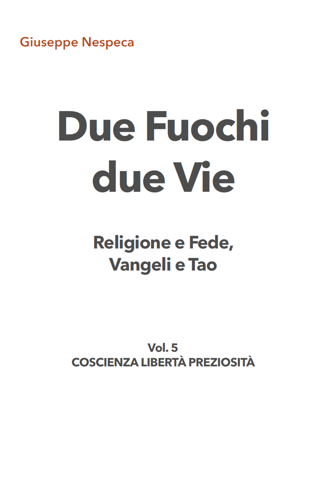The Church was built on the foundation of the Apostles as a community of faith, hope and charity. Through the Apostles, we come to Jesus himself. The Church begins to establish herself when some fishermen of Galilee meet Jesus, allowing themselves to be won over by his gaze, his voice, his warm and strong invitation: "Follow me, and I will make you become fishers of men" (Mk 1: 17; Mt 4: 19).
At the start of the third millennium, my beloved Predecessor John Paul II invited the Church to contemplate the Face of Christ (cf. Novo Millennio Ineunte, n. 16 ff.). Continuing in the same direction, I would like to show, in the Catechesis that I begin today, how it is precisely the light of that Face that is reflected on the face of the Church (cf. Lumen Gentium, n. 1), notwithstanding the limits and shadows of our fragile and sinful humanity.
After Mary, a pure reflection of the light of Christ, it is from the Apostles, through their word and witness, that we receive the truth of Christ. Their mission is not isolated, however, but is situated within a mystery of communion that involves the entire People of God and is carried out in stages from the Old to the New Covenant.
In this regard, it must be said that the message of Jesus is completely misunderstood if it is separated from the context of the faith and hope of the Chosen People: like John the Baptist, his direct Precursor, Jesus above all addresses Israel (cf. Mt 15: 24) in order to "gather" it together in the eschatological time that arrived with him. And like that of John, the preaching of Jesus is at the same time a call of grace and a sign of contradiction and of justice for the entire People of God.
And so, from the first moment of his salvific activity, Jesus of Nazareth strives to gather together the People of God. Even if his preaching is always an appeal for personal conversion, in reality he continually aims to build the People of God whom he came to bring together, purify and save.
As a result, therefore, an individualistic interpretation of Christ's proclamation of the Kingdom, specific to liberal theology, is unilateral and without foundation, as a great liberal theologian Adolf von Harnack summed it up in the year 1900 in his lessons on The essence of Christianity: "The Kingdom of God, insofar as it comes in single individuals, is able to enter their soul and is welcomed by them. The Kingdom of God is the dominion of God, certainly, but it is the dominion of the holy God in individual hearts" (cf. Third Lesson, 100 ff.).
In reality, this individualism of liberal theology is a typically modern accentuation: in the perspective of biblical tradition and on the horizon of Judaism, where the work of Jesus is situated in all its novelty, it is clear that the entire mission of the Son-made-flesh has a communitarian finality. He truly came to unite dispersed humanity; he truly came to unite the People of God.
An evident sign of the intention of the Nazarene to gather together the community of the Covenant, to demonstrate in it the fulfilment of the promises made to the Fathers who always speak of convocation, unification, unity, is the institution of the Twelve. We heard about this institution of the Twelve in the Gospel reading. I shall read the central passage again: "And he went up into the hills and called to him those whom he desired; and they came to him. And he appointed twelve to be with him, and to be sent out to preach and have authority to cast out demons. The names of the twelve Apostles are these..." (Mk 3: 13-16; cf. Mt 10: 1-4; Lk 6: 12-16).
On the site of the revelation, "the mount", taking initiative that demonstrates absolute awareness and determination, Jesus establishes the Twelve so that, together with him, they are witnesses and heralds of the coming of the Kingdom of God.
There are no doubts about the historicity of this call, not only because of the antiquity and multiplicity of witnesses, but also for the simple reason that there is also the name of Judas, the Apostle who betrayed him, notwithstanding the difficulties that this presence could have caused the new community.
The number 12, which evidently refers to the 12 tribes of Israel, already reveals the meaning of the prophetic-symbolic action implicit in the new initiative to re-establish the holy people. As the system of the 12 tribes had long since faded out, the hope of Israel awaited their restoration as a sign of the eschatological time (as referred to at the end of the Book of Ezekiel: 37: 15-19; 39: 23-29; 40-48).
In choosing the Twelve, introducing them into a communion of life with himself and involving them in his mission of proclaiming the Kingdom in words and works (cf. Mk 6: 7-13; Mt 10: 5-8; Lk 9: 1-6; 6: 13), Jesus wants to say that the definitive time has arrived in which to constitute the new People of God, the people of the 12 tribes, which now becomes a universal people, his Church.
Appeal for Israel
With their very own existence, the Twelve - called from different backgrounds - become an appeal for all of Israel to convert and allow herself to be gathered into the new covenant, complete and perfect fulfilment of the ancient one. The fact that he entrusted to his Apostles, during the Last Supper and before his Passion, the duty to celebrate his Pasch, demonstrates how Jesus wished to transfer to the entire community, in the person of its heads, the mandate to be a sign and instrument in history of the eschatological gathering begun by him. In a certain sense we can say that the Last Supper itself is the act of foundation of the Church, because he gives himself and thus creates a new community, a community united in communion with himself.
In this light, one understands how the Risen One confers upon them, with the effusion of the Spirit, the power to forgive sins (cf. Jn 20: 23). Thus, the Twelve Apostles are the most evident sign of Jesus' will regarding the existence and mission of his Church, the guarantee that between Christ and the Church there is no opposition: despite the sins of the people who make up the Church, they are inseparable.
Therefore, a slogan that was popular some years back: "Jesus yes, Church no", is totally inconceivable with the intention of Christ. This individualistically chosen Jesus is an imaginary Jesus.
We cannot have Jesus without the reality he created and in which he communicates himself. Between the Son of God-made-flesh and his Church there is a profound, unbreakable and mysterious continuity by which Christ is present today in his people. He is always contemporary with us, he is always contemporary with the Church, built on the foundation of the Apostles and alive in the succession of the Apostles. And his very presence in the community, in which he himself is always with us, is the reason for our joy. Yes, Christ is with us, the Kingdom of God is coming.
[Pope Benedict, General Audience 15 March 2006]












